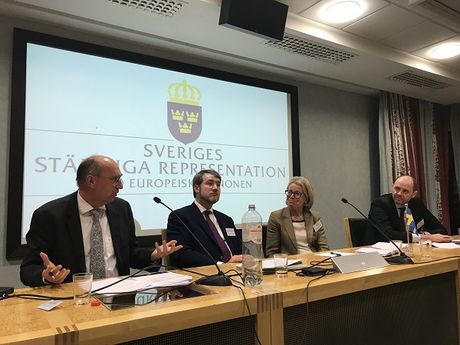"Clean Energy for all Europeans" - with this goal the EU Commission presented the so-called Winter Package at the end of 2016. The EU Parliament, the European Council and the Commission are currently negotiating the regulations and directives to emerge from the winter package. One thing is clear: renewable energy sources must be expanded in order to achieve the climate targets. The European electricity system needs new regulations to ensure supply security and grid stability despite fluctuating generation.
International exchange on regulations for the European electricity market
At the seminar "Policy options for a reliable European electricity system - Perspectives from the EU, Germany and Sweden", experts from Germany, Sweden and Brussels discussed the legal requirements the European Union can use to counter changes in the electricity system. Germany and Sweden were used as examples to illustrate the particular challenges facing the individual Member States. Klaus-Dieter Borchardt, Director of the Internal Energy Market in the Commission's Directorate-General for Energy, stressed in his introductory speech that it is important to fully integrate renewable energy into the market: "We no longer need feed-in tariffs or feed-in priority for wind and PV systems. The plants must be treated in the same way as all other technologies on the market and also provide system services." He sees a central role in the transition to a climate-friendly energy system among consumers. As "prosumers" they would have to be integrated into the market. On the one hand, the large-scale use of smart meters and on the other hand, incentives on the market for flexible load management ("demand response management") are important for this.


